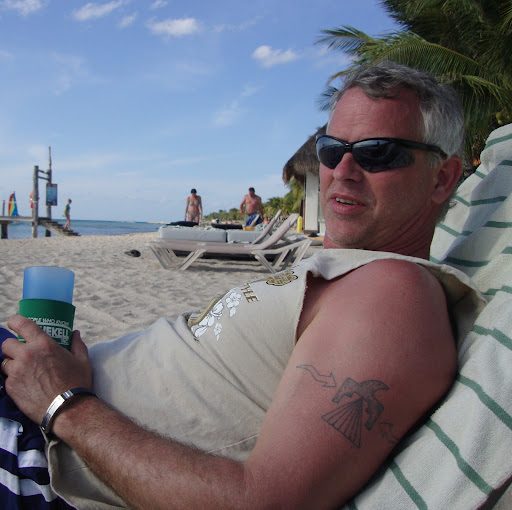Richard C Ewers
age ~53
from Fullerton, CA
Richard Ewers Phones & Addresses
- 1437 Malvern Ave, Fullerton, CA 92833
- Huntington Beach, CA
- San Clemente, CA
- Orange, CA
Work
-
Position:Production Occupations
Education
-
Degree:Associate degree or higher
Resumes

Principal Engineer
view sourceLocation:
Fullerton, CA
Industry:
Medical Devices
Work:
Fresca Medical
Principal Engineer
Voyage Medical Jul 2011 - Mar 2013
Senior Engineering Director
Usgi Medical Oct 2001 - Jul 2011
Senior Director
Applied Medical Jan 1995 - Oct 2001
Engineering Director
Principal Engineer
Voyage Medical Jul 2011 - Mar 2013
Senior Engineering Director
Usgi Medical Oct 2001 - Jul 2011
Senior Director
Applied Medical Jan 1995 - Oct 2001
Engineering Director
Education:
California State University, Long Beach
Skills:
Medical Devices
Cross Functional Team Leadership
Product Development
Engineering
Management
Design Control
R&D
Iso 13485
Fda
Clinical Research
Biomedical Engineering
Testing
Catheters
Strategy
Cross Functional Team Leadership
Product Development
Engineering
Management
Design Control
R&D
Iso 13485
Fda
Clinical Research
Biomedical Engineering
Testing
Catheters
Strategy

Richard Ewers
view sourceName / Title
Company / Classification
Phones & Addresses
President
Rich Solutions Corp
1437 W Malvern Ave, Fullerton, CA 92833
Senior Director Engineering
USGI Medical
Medical Devices · Commercial Physical Research · Research and Development in the Physical, Engineering, and L · Surgical & Medical Instrument Mfg
Medical Devices · Commercial Physical Research · Research and Development in the Physical, Engineering, and L · Surgical & Medical Instrument Mfg
1140 Calle Cordillera, San Clemente, CA 92673
114O Calle Cordillera, San Clemente, CA 92673
9493693890, 9493693891, 9493669441
114O Calle Cordillera, San Clemente, CA 92673
9493693890, 9493693891, 9493669441
Us Patents
-
Ureteral Stent System Apparatus And Method
view source -
US Patent:6395021, May 28, 2002
-
Filed:Apr 30, 1999
-
Appl. No.:09/303113
-
Inventors:Charles C. Hart - Huntington Beach CA
Ralph V. Clayman - St. Louis MO
John R. Brustad - Dana Point CA
Frans Vandenbroek - Rancho Santa Margarita CA
Richard C. Ewers - Huntington Beach CA -
Assignee:Applied Medical Resources Corporation - Rancho Santa Margarita CA
-
International Classification:A61F 206
-
US Classification:623 115, 623 12, 604 8
-
Abstract:A stent having an elongate tubular configuration is formed of a plurality of elongate elements interwoven or braided to form a tubular configuration. The elements may be relatively strong and rigid, but movable relative to each other within the weave or braid in order to provide the stent with generally soft characteristics. The elements may be formed of different materials, such as an absorbent material permitting the stent to be doped with materials such as drugs and chemicals. Even the absorbency can be controlled and varied to provide a predetermined time-release of the absorbent.
-
Self-Deploying Catheter Assembly
view source -
US Patent:6589208, Jul 8, 2003
-
Filed:May 30, 2001
-
Appl. No.:09/870255
-
Inventors:Richard C. Ewers - Huntington Beach CA
Boun Pravong - Corona CA
Gary R. Dulak - Newport Beach CA -
Assignee:Applied Medical Resources Corporation - Rancho Santa Margarita CA
-
International Classification:A61M 2900
-
US Classification:604104, 604 9001, 60410201, 604107, 604174, 60416404, 606232
-
Abstract:A self-deploying catheter assembly comprises an anchoring device mounted to a tube. A distal end of the anchoring device is held in a fixed position by a releasable suture while a proximal end is freely movable between a proximal position and a distal position defined by a stop on the tube. During insertion into a body cavity, the anchor automatically maintains a low-profile state with the ends spaced apart. Once fully inserted, the anchor self converts into a high-profile state when the tube is slightly withdrawn, bringing the ends closer together. The suture is disengaged to release the distal end of the anchor in order to facilitate a low-profile state for withdrawal of the assembly.
-
Shape Lockable Apparatus And Method For Advancing An Instrument Through Unsupported Anatomy
view source -
US Patent:6783491, Aug 31, 2004
-
Filed:Jun 13, 2002
-
Appl. No.:10/173220
-
Inventors:Vahid Saadat - Saratoga CA 95070
Richard C. Ewers - Fullerton CA 92833
Eugene G. Chen - Carlsbad CA 92009 -
International Classification:A61B 100
-
US Classification:600114, 600139, 600127
-
Abstract:Apparatus and methods are provided for placing and advancing a diagnostic or therapeutic instrument in a hollow body organ of a tortuous or unsupported anatomy, comprising a handle, an overtube, a distal region having an atraumatic tip. The overtube may be removable from the handle, and have a longitudinal axis disposed at an angle relative to the handle. The overtube may be selectively stiffened to reduce distension of the organ caused by advancement of the diagnostic or therapeutic instrument. The distal region permits passive steering of the overtube caused by deflection of the diagnostic or therapeutic instrument while the atraumatic tip prevents the wall of the organ from becoming caught or pinched during manipulation of the diagnostic or therapeutic instrument.
-
Shape Lockable Apparatus And Method For Advancing An Instrument Through Unsupported Anatomy
view source -
US Patent:6790173, Sep 14, 2004
-
Filed:Jun 13, 2002
-
Appl. No.:10/173227
-
Inventors:Vahid Saadat - Saratoga CA
Richard C. Ewers - Fullerton CA
Eugene G. Chen - Carlsbad CA -
Assignee:USGI Medical, Inc. - San Clemente CA
-
International Classification:A61B 104
-
US Classification:600114, 600115, 600121, 600129, 600141, 600144
-
Abstract:Apparatus and methods are provided for placing and advancing a diagnostic or therapeutic instrument in a hollow body organ of a tortuous or unsupported anatomy, comprising a handle, an overtube, a distal region having an atraumatic tip. The overtube may be removable from the handle, and have a longitudinal axis disposed at an angle relative to the handle. The overtube may be selectively stiffened to reduce distension of the organ caused by advancement of the diagnostic or therapeutic instrument. The distal region permits passive steering of the overtube caused by deflection of the diagnostic or therapeutic instrument while the atraumatic tip prevents the wall of the organ from becoming caught or pinched during manipulation of the diagnostic or therapeutic instrument.
-
Shape Lockable Apparatus And Method For Advancing An Instrument Through Unsupported Anatomy
view source -
US Patent:6837847, Jan 4, 2005
-
Filed:Jun 13, 2002
-
Appl. No.:10/173238
-
Inventors:Richard C. Ewers - Fullerton CA, US
Vahid Saadat - Saratoga CA, US
Eugene G. Chen - Carlsbad CA, US -
Assignee:USGI Medical, Inc. - San Clemente CA
-
International Classification:A61B 104
-
US Classification:600114, 600121, 600127
-
Abstract:Apparatus and methods are provided for placing and advancing a diagnostic or therapeutic instrument in a hollow body organ of a tortuous or unsupported anatomy, comprising a handle, an overtube, a distal region having an atraumatic tip. The overtube may be removable from the handle, and have a longitudinal axis disposed at an angle relative to the handle. The overtube may be selectively stiffened to reduce distension of the organ caused by advancement of the diagnostic or therapeutic instrument. The distal region permits passive steering of the overtube caused by deflection of the diagnostic or therapeutic instrument while the atraumatic tip prevents the wall of the organ from becoming caught or pinched during manipulation of the diagnostic or therapeutic instrument.
-
Laparoscopic Illumination Apparatus And Method
view source -
US Patent:6939296, Sep 6, 2005
-
Filed:May 13, 2003
-
Appl. No.:10/436522
-
Inventors:Richard C. Ewers - Fullerton CA, US
Gary R. Dulak - Newport Beach CA, US
Nabil Hilal - Laguna Niguel CA, US -
Assignee:Applied Medical Resources Corp. - Rancho Santa Margarita CA
-
International Classification:A61B001/32
-
US Classification:600206, 600204, 600205, 600208, 600210, 600212, 600245, 606 1, 128849, 128850
-
Abstract:An access device particularly adapted for use in laparoscopic surgery facilitates access with instruments, such as the hand of the surgeon, across a body wall and into a body cavity. The device can be formed of a gel material having properties for forming a zero seal, or an instrument seal with a wide range of instrument diameters. The gel material can be translucent facilitating illumination and visualization of the surgical site through the access device.
-
Shape Lockable Apparatus And Method For Advancing An Instrument Through Unsupported Anatomy
view source -
US Patent:6942613, Sep 13, 2005
-
Filed:Oct 25, 2002
-
Appl. No.:10/281461
-
Inventors:Richard C. Ewers - Fullerton CA, US
Vahid Saadat - Saratoga CA, US
Boris Reydel - West Caldwell NJ, US -
Assignee:USGI Medical Inc. - San Clemente CA
-
International Classification:A61B001/00
-
US Classification:600114, 600121
-
Abstract:Apparatus and methods are provided for placing and advancing a diagnostic or therapeutic instrument in a hollow body organ of a tortuous or unsupported anatomy, comprising a handle, an overtube disposed within a hydrophilic sheath, and a distal region having an atraumatic tip. The overtube may be removable from the handle, and have a longitudinal axis disposed at an angle relative to the handle. The sheath may be disposable to permit reuse of the overtube. Fail-safe tensioning mechanisms may be provided to selectively stiffen the overtube to reduce distension of the organ caused by advancement of the diagnostic or therapeutic instrument. The fail-safe tensioning mechanisms reduce the risk of reconfiguration of the overtube in the event that the tension system fails, and, in one embodiment, rigidizes the overtube without substantial proximal movement of the distal region. The distal region permits passive steering of the overtube caused by deflection of the diagnostic or therapeutic instrument, while the atraumatic tip prevents the wall of the organ from becoming caught or pinched during manipulation of the diagnostic or therapeutic instrument.
-
Wound Retraction Apparatus And Method
view source -
US Patent:6958037, Oct 25, 2005
-
Filed:Oct 20, 2001
-
Appl. No.:10/399209
-
Inventors:Richard C. Ewers - Fullerton CA, US
John R. Brustad - Dana Point CA, US
Edward D. Pingleton - Laguna Niguel CA, US
Nabil Hilal - Laguna Niguel CA, US
Payam Adlparvar - Lake Forest CA, US
Scott Taylor - Mission Viejo CA, US
Gary R. Dulak - Newport Beach CA, US
Michael J. Dunn - Santa Ana CA, US
Norman L. Morales - San Jose CA, US
Charles C. Hart - Summerville SC, US
Robert R. Bowes - Aliso Viejo CA, US -
Assignee:Applied Medical Resources Corporation - Rancho Santa Margarita CA
-
International Classification:A61B017/02
-
US Classification:600208
-
Abstract:A surgical wound retractor is adapted to dilate a wound stretchable to a desired diameter, the retractor includes a first ring having a diameter greater than that desired for the wound and being adapted for disposition interiorly of the wound. A second ring has a diameter greater than that desired for the wound and is adapted for disposition exteriorly of the wound. A plurality of retraction elements are disposed in a generally cylindrical relationship to each other, between the first ring and the second ring. These elements extend through the wound to exert a radial retraction force on the wound which is dependent on the distance separating the first ring and the second ring. Retraction elements, both distensible and non-distensible are contemplated with appropriate attachment elements at the rings to provide for variations in the retraction force. With a suitable retraction sleeve, a third ring can be provided to form a circumferential retainer to vary the retraction force. Rings can also be made inflatable or self-expanding to vary the retraction force.
Googleplus

Richard Ewers
Plaxo

Research Test Pilot Richa...
view sourcePalmdale, CaliforniaResearch Test Pilot at NASA

Richard Ewers
view sourceDallas, TX
Youtube
Classmates

Richard Ewers
view sourceSchools:
Fredericktown High School Fredericktown OH 1961-1965
Community:
Steve Kollas

Richard Ewers (Foreman)
view sourceSchools:
Santa Cruz High School Santa Cruz CA 1981-1985
Community:
Janet Heine

Fredericktown High School...
view sourceGraduates:
Richard Ewers (1961-1965),
Marty Flach (1990-1994),
Bob Marely (2007-2011),
Kim Smith (1986-1990),
Tom Beheler (1970-1974),
Candy Morrison (1984-1988)
Marty Flach (1990-1994),
Bob Marely (2007-2011),
Kim Smith (1986-1990),
Tom Beheler (1970-1974),
Candy Morrison (1984-1988)

Jefferson High School, Ro...
view sourceGraduates:
Donald Wilson (1963-1967),
Gene Terry (1967-1971),
Cynthia Hall (1969-1973),
Richard Ewers (1959-1963)
Gene Terry (1967-1971),
Cynthia Hall (1969-1973),
Richard Ewers (1959-1963)

Richard Ewers
view source
Richard Ewers
view source
Richard Ewers
view source
Richard Ewers
view source
Richard M. Ewers
view source
Richard Ewers
view source
Richard Ewers
view source
Richard J Ewers
view sourceFlickr
Myspace
Other Social Networks

Richard Ewers Google+
view sourceNetwork:
GooglePlus
Richard Ewers - - IT Consultant - Pariveda Solutions - Dallas, TX.
Get Report for Richard C Ewers from Fullerton, CA, age ~53













